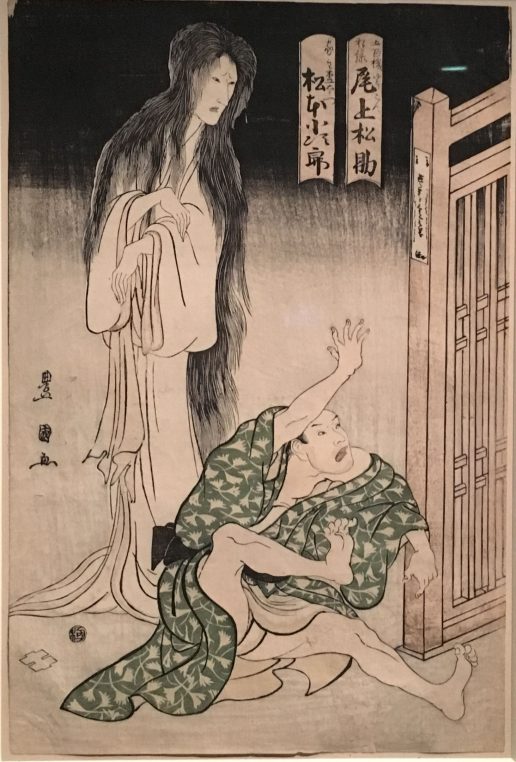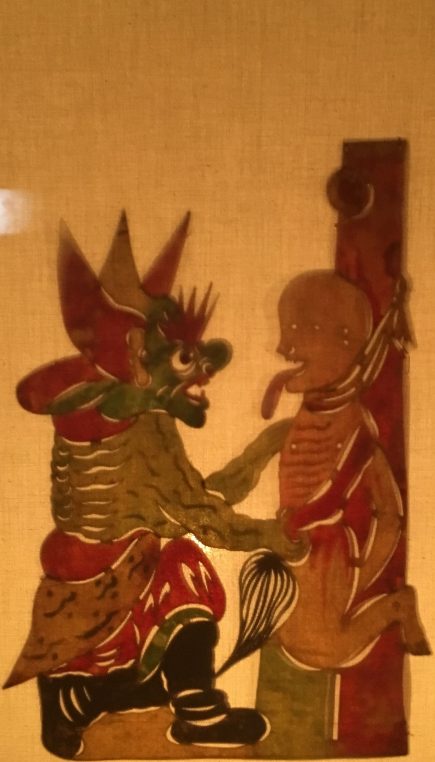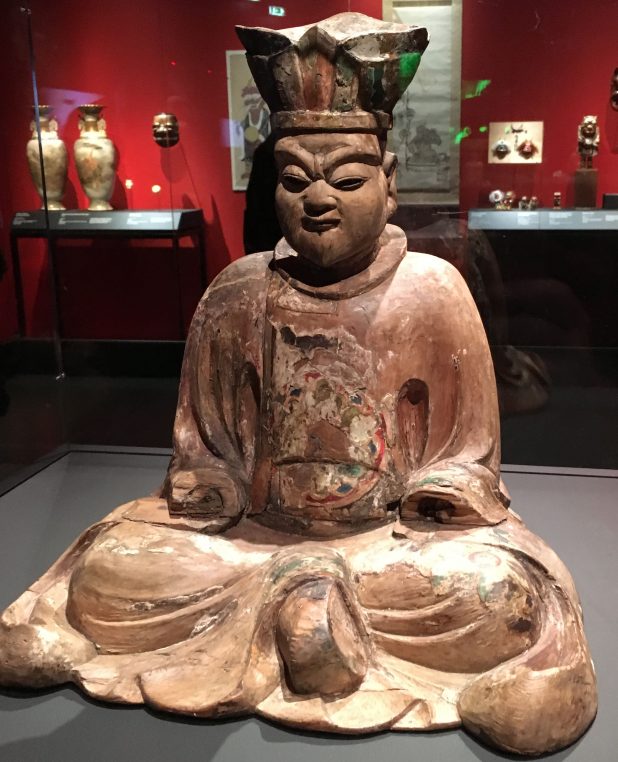It is a collection of spirits wandering through forests, of hungry ghosts and vengeful cat-women which have been haunting the Asian imagination for centuries that is the topic of a new exhibition “Ghosts and Hells in Asian art” at Musée du Quai Branly Jacques Chirac. From buddhism to video games, from religion to popular art, curators have found the most amazing documents and costumes in Chinese, Thai and Japanese collections.

Head of a drowned samurai, ca 1930, Nagoya.The legend says that drowned samurais become crabs. This painted crab is an object for protection
The exhibition starts with two films by Nobuo Nakagawa, a specialist of ghosts films who died in 1984. They mix hells in blues and in reds. And some wonderful 18 th century painted masks of damned characters immediately give us a concrete idea of terror. A king-judge of the Third Hell, Songdi Wang in 1517 and Wuguan Wang from the Fourth Hell represent the funeral rituals in the Chinese temples. From the 17 th century, a wooden judge from Japan sits in the lotus position. It was lent by the Victoria and Albert museum.
Theatre and puppets play a big role in this show and a number of very pretty 19 th century Chinese figures in leather describe Mulian going down to inferno. Once again, Japanese prints are a strong moment especially with the Hokusai series, “The hundred stories of Okiku’s ghost”, who was a servant unfairly accused of having broken a precious plate. She was tied and thrown into a well. Every night, her spirit comes back to count the plates and haunts the master of the house.

Utagawa Toyokuni, actor Once Matsusuke in the part of the ghost Iohata, 1804, Musée des Beaux Arts de Nancy
Sea ghosts are also described here as Funayûrei, spirits of the drowned. They try to sink ships and appear in the fog. An extraordinary ink on paper of a skeleton in 19 th century Japan, costumes of Taoist Chinese priests, give a very lively feeling to the exhibition. One of the last and most ancient sculpture (5th century) is of a Chinese monster-guardian of the temple in terra-cotta and comes from Musée Cernuschi.
The exhibition is on at Musée du Quai Branly till July 15 th and shows modern video games at the end. It is quite a surprise.
Share this Post



